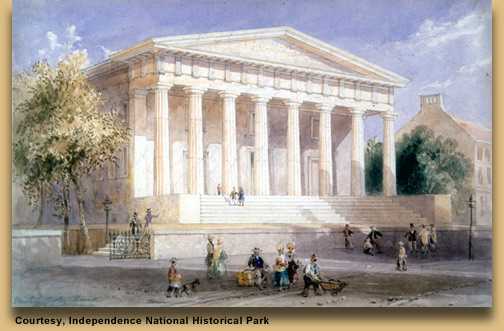William Henry Bartlett (1809 -1854)
Get a William Henry Bartlett (1809 -1854) Certificate of Authenticity for your painting (COA) for your William Henry Bartlett (1809 -1854) drawing.
For all your William Henry Bartlett (1809 -1854) artworks you need a Certificate of Authenticity (COA) in order to sell, to insure or to donate for a tax deduction.
Getting a William Henry Bartlett (1809 -1854) Certificate of Authenticity (COA) is easy. Just send us photos and dimensions and tell us what you know about the origin or history of your William Henry Bartlett (1809 -1854) painting or drawing.
If you want to sell your William Henry Bartlett (1809 -1854) painting or drawing use our selling services. We offer William Henry Bartlett (1809 -1854) selling help, selling advice, private treaty sales and full brokerage.
We have been authenticating William Henry Bartlett (1809 -1854) and issuing certificates of authenticity since 2002. We are recognized William Henry Bartlett (1809 -1854) experts and William Henry Bartlett (1809 -1854) certified appraisers. We issue COAs and appraisals for all William Henry Bartlett (1809 -1854) artworks.
Our William Henry Bartlett (1809 -1854) paintings and drawings authentications are accepted and respected worldwide.
Each COA is backed by in-depth research and analysis authentication reports.
The William Henry Bartlett (1809 -1854) certificates of authenticity we issue are based on solid, reliable and fully referenced art investigations, authentication research, analytical work and forensic studies.
We are available to examine your William Henry Bartlett (1809 -1854) painting or drawing anywhere in the world.
You will generally receive your certificates of authenticity and authentication report within two weeks. Some complicated cases with difficult to research William Henry Bartlett (1809 -1854) paintings or drawings take longer.
Our clients include William Henry Bartlett (1809 -1854) collectors, investors, tax authorities, insurance adjusters, appraisers, valuers, auctioneers, Federal agencies and many law firms.
We perform William Henry Bartlett art authentication, appraisal, certificates of authenticity (COA), analysis, research, scientific tests, full art authentications. We will help you sell your William Henry Bartlett or we will sell it for you.
Landscape
William Henry Bartlett was a British artist, best known for his numerous steel engravings. Bartlett was born in Kentish Town, London in 1809. He was apprenticed to John Britton (1771-1857), and became one of the foremost illustrators of topography of his generation. He travelled throughout Britain, and in the mid and late 1840s he travelled extensively in the Balkans and the Middle East. He made four visits to the United States between 1835 and 1852.
In 1835, Bartlett first visited the United States in order to draw the buildings, towns and scenery of the northeastern states. The finely detailed steel engravings Bartlett produced were published uncolored with a text by Nathaniel Parker Willis as American Scenery; or Land, Lake, and River: Illustrations of Transatlantic Nature. American Scenery was published by George Virtue in London in 30 monthly installments from 1837 to 1839. Bound editions of the work were published from 1840 onward. His impressions of Canada were collected in Canadian Scenery in 1842.

Second Bank of the US, Engraving
Bartlett made sepia wash drawings the exact size to be engraved. His engraved views were widely copied by artists, but no signed oil painting by his hand is known. Engravings based on Bartlett’s views were later used in his posthumous History of the United States of North America, continued by B. B. Woodward and published around 1856.
William Henry Bartlett died of fever on board of a French ship off the coast of Malta returning from his last trip to Israel, in 1854.
Bartletts primary concern was to render “lively impressions of actual sights”, as he wrote in the preface to The Nile Boat (London, 1849). Many views contain some ruin or element of the past including many scenes of churches, abbeys, cathedrals and castles, and Nathaniel Parker Willis described Bartlett’s talent thus: “Bartlett could select his point of view so as to bring prominently into his sketch the castle or the cathedral, which history or antiquity had allowed”.
